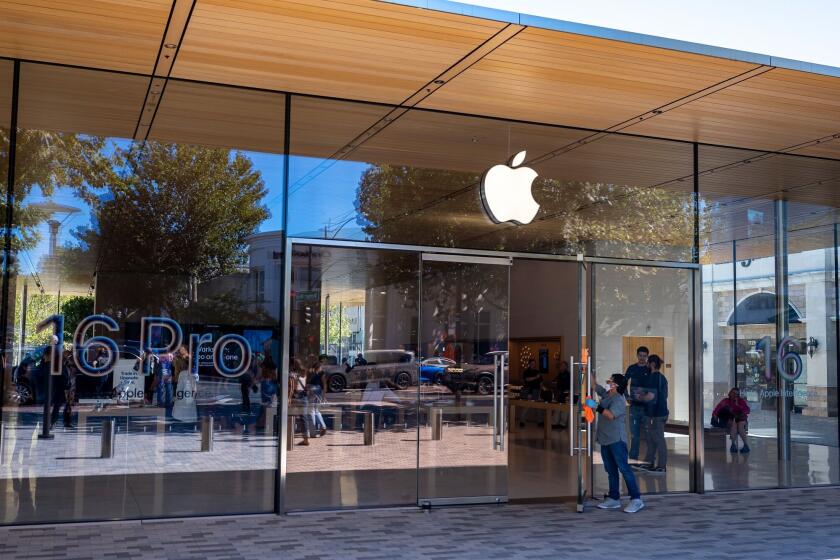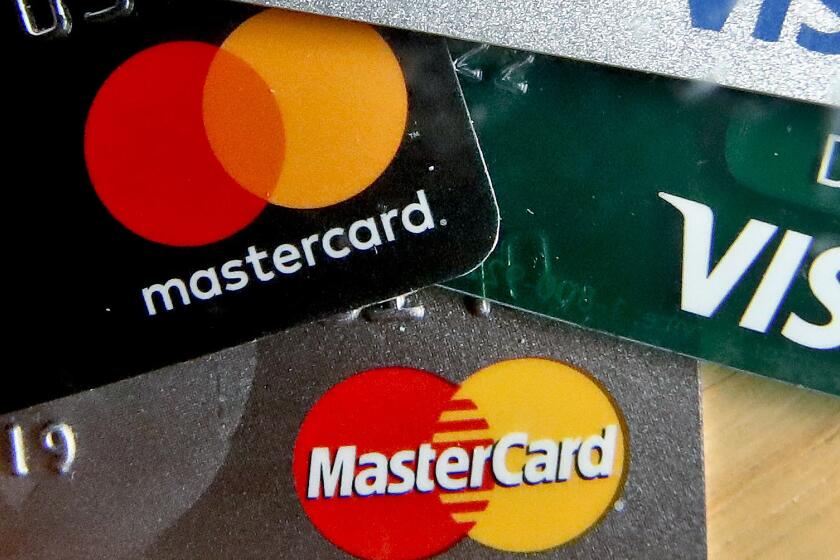Mortgage Activity Shifts to Overdrive
- Share via
Home buyers are poised to go on another binge of mortgage borrowing and refinancing, lenders say, spurred by the lowest interest rates since 1966, investors’ flight from stocks to real estate and credit so plentiful that one expert says: “If you can breathe, you can get a mortgage.”
Though the boom has contributed to concerns that some housing markets may be overheating, analysts say it’s providing a needed prop for the U.S. economy. And lenders are swamped with business as borrowers indulge in “serial refinancing,” encouraged by a raft of new ways to get lower rates with little or no upfront expense.
The Mortgage Bankers Assn., which predicted in March that home loans would fall 25% this year, expects the current surge to boost mortgages to about last year’s record of nearly $2.3 trillion.
Even including higher-interest “jumbo” mortgages--the loans of $300,700 and up that are increasingly common in high-priced areas such as Southern California--the average rate for a fixed-rate 30-year home loan this week was 6.3% and heading lower, said HSH Associates, a consumer loan data tracker in Butler, N.J. Adjustable-rate loans are widely available with initial “teaser” rates below 3%, HSH executives noted.
At Countrywide Credit Industries Inc., borrowers with good credit and existing 30-year loans at around 7% have been able to refinance at 6% without paying a dime in closing costs--”nirvana for homeowners,” Countrywide Chief Executive Angelo Mozilo said.
It’s been euphoric for Countrywide as well. The Calabasas lender is on pace to originate a record $170 billion in loans this year, “and it’s accelerating,” said Mozilo, who expects the industry to top last year’s record. But the low rates are only part of the equation, experts say. Just as important to the boom are the multiplying alternatives to traditional fixed-rate and adjustable-rate loans.
Some of these new products reduce initial payments by charging only interest at first; others do so by setting a lower fixed rate for three, five or seven years before converting to adjustable rates. Others are offered with virtually no down payments required.
At Wells Fargo & Co., consumer demand for a hybrid mortgage that is fixed for five years and then becomes adjustable has grown more than 150% from last fall. Brad Blackwell, a senior vice president at the San Francisco-based bank, said consumers who refinanced their homes six months ago have been drawn back by rates that have continued to fall. Borrowers, especially those with jumbo mortgages, “are flocking to this loan in record numbers,” he said.
Volume Climbing
Quicken Loans also registered record volume last week, taking in 500 applications that totaled $70 million in one day, including “a lot of clients who refinanced last spring, last fall,” said Jay Farner, a vice president for the lender in Livonia, Mich.
One consumer who refinanced a 30-year fixed loan to 6.34% six months ago just refinanced again to a fixed loan at 5.25% that changes to an adjustable rate after three years, saving him an additional $120 a month, Farner said.
Lending also has been spurred by the willingness of home-loan buyers like Fannie Mae and Wells Fargo to accept mortgages representing more than 100% of the appraised value of a home.
“The credit spigots are as wide open as we’ve ever seen them,” HSH Vice President Keith Gumbinger said. “You can borrow money in excess of the value of your home. You don’t need a down payment, you don’t need any money for closing costs. Things could change, but for people with decent credit right now, if you can breathe, you can get a mortgage.”
The surge in applications is starting to strain the mortgage system. It takes roughly a month for a refinanced loan to get processed, about double the length of time under typical conditions, said Ted Grose, principal of First Mortgage Advisors in Los Angeles.
“Lenders are absolutely swamped right now,” said Grose, who also is president of the California Assn. of Mortgage Brokers. “They just can’t handle all the paperwork.”
Fed Provides Spark
The latest spark for low mortgage rates came Tuesday, when the Federal Reserve Board warned that the danger of the economy slipping back into recession is greater than the danger of inflation. Investors dumped stocks on the news and bought bonds despite the fact that they were paying the lowest interest rates in 41 years. That pushed rates still lower, with the yield on the 10-year Treasury note--the benchmark for mortgage rates--falling to 4.08% on Tuesday before edging up to 4.12% on Wednesday.
With mortgage rates already at the lowest point since 1966, when the annual cost of borrowing was 6.26%, home-loan company Freddie Mac was expected to announce today that they have tumbled further.
“That will keep the refi boom going on longer,” said Robert Van Order, chief international economist at Freddie Mac. Long-term rates could be marked down closer to 6% before the economy gains enough steam to pull up mortgage rates to about 6.5% by year’s end, Van Order said.
The mortgage spree is accomplishing one of the Fed’s goals by supporting consumer spending, which has propped up the economy to a surprising extent over the shaky last year and a half. Consumers who buy new homes also spend heavily to furnish them, while refinancing can permanently lower mortgage payments or allow homeowners to pull equity out of their homes to spend on other goods and services.
Farner said many consumers are using new home loans to consolidate their high-interest credit cards and other debts. Other homeowners, believing that the economic recovery is too fragile to make major commitments, are deciding to stay put rather than move into bigger homes. So they are pulling out equity to finance home improvements.
Rates Help Home Prices
The low-cost mortgages help support housing prices, which in turn keeps millions of homeowners from feeling overly oppressed by declines in their stock portfolios, said Doug Duncan, an economist for the mortgage bankers association.
“[Median-income] households still have far more equity in their homes than they do in the stock market, and that’s helped consumer confidence,” he said.
Duncan said the decline in stock prices, coupled with low mortgage rates, appears to be causing older baby boomers to shift from 30-year to 15-year home loans as they look ahead to retirement. Freddie Mac estimates that interest rates on 15-year loans are 0.62 percentage point lower this month than rates on 30-year loans, a “spread” more than twice as wide as two years ago.
Gumbinger of HSH said homeowners looking to invest outside the stock market even are inquiring about 10-year mortgages, “truly a rare breed of loan,” he said.
The low rates have benefited home buyers especially in expensive markets like California, where the median price of a single-family home in June was $324,370, up 20% in a year.
But that price picture could change quickly with a major uptick in mortgage rates.
“If interest rates went up to 9%, prices probably would fall,” Duncan said. “It wouldn’t be a housing-demand problem, just credit availability.”
More to Read
Inside the business of entertainment
The Wide Shot brings you news, analysis and insights on everything from streaming wars to production — and what it all means for the future.
You may occasionally receive promotional content from the Los Angeles Times.











